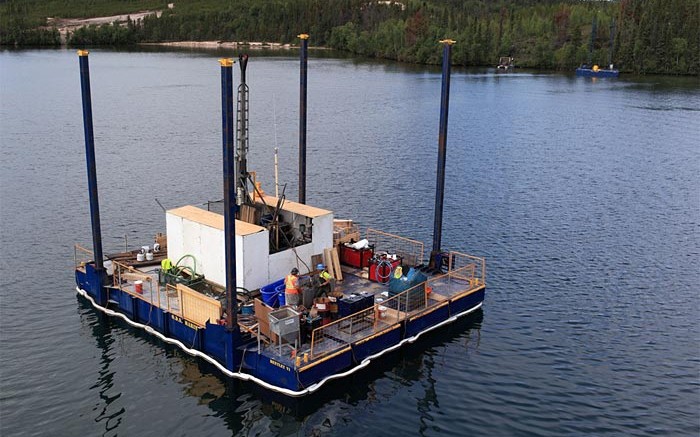VANCOUVER — Fission Uranium (TSXV: FCU; US-OTC: FCUUF) hit mineralization in every one of the first 14 holes of its mid-year drill program at Patterson Lake South (PLS), continuing a drilling success story that has delineated shallow, high-grade uranium along more than 1 km of strike in just 19 months.
PLS is just outside the southwest margin of the Athabasca basin. Fission’s recent drill program at the site joined four zones, added a new zone and widened the known bodies. The result was five mineralization zones with the largest — zone 780E — extending along 855 metres of northeast to southwest strike and across as much as 95 metres wide.
The mid-year drill program looks set to grow the zones again. Two holes already extended the zone 780E to the north by 50 metres, while several other holes highlighted the potential to grow the zone to the east.
Fission initially reports radioactivity readings from its drill cores, as measured by a hand-portable scintillometer. Core is then sent for analysis and assays results are later released. Scintillometer readings of radioactive counts per second (cps) have to date correlated well with uranium mineralization.
The two holes drilled north from the eastern end of 780E returned the strongest results. Hole 224 returned 79 metres of total composite mineralization, including 4 metres of mineralized core from a parallel, previously unknown metapelitic gneissic unit, 45 metres north of the main horizon.
Hole 230 pushed the zone north, returning 128 metres of total composite mineralization between 115 and 362 metres deep. The intercept included 6.1 metres of composite core producing greater than 10,000 cps of radioactivity. The scintillometer Fission has been using at PLS saturates at that level, so once a reading hits 10,000 cps it is considered off-scale.
“Importantly, the hole intersected mineralization farther north of previous drilling, hitting a previously unknown unit,” Mick Carew, an analyst with Haywood Securities, said in a report. “These results suggest the potential for significant expansion of the PLS system, particularly to the northeast.”
To the southwest along the zone, hole 225 cut 76 metres of composite mineralization, including 4.1 metres of off-scale radioactive core. Roughly 300 metres along strike, nearing the southwest end of the zone, hole 220 also produced a good result: 93.1 metres of composite mineralization, including 4.6 metres of off-scale radioactive core.
“Fourteen holes, 14 hits,” Fission president and COO Ross McElroy said in a statement. “We have wide mineralization in every drill hole, high-grade intervals in 10 of the holes and a new mineralized area to the north of the 780E zone’s eastern section. The [mid-year] drill program is progressing extremely well.”
Fission plans to drill 63 holes totalling 20,330 metres in its mid-year program. Seventy percent of the holes are aimed at expanding the known zones. The other holes will test property-wide targets established through geophysics and lake water radon-gas testing.
The company is spending $12 million on the mid-year program, part of its $28-million 2014 exploration budget. Once drilling wraps up, Fission plans to calculate the first-ever PLS resource estimate, which will use results from more than 220 holes. To date, 172 of the 177 holes drilled at PLS have hit mineralization.
The company will also complete metallurgical and petrographic studies.
On news of the mid-year drill results Fission’s share price gained 5¢ to close at $1.29. The company has a 52-week trading range of 93¢ to $1.73, and 352 million shares outstanding.


Be the first to comment on "Fission going strong at PLS"